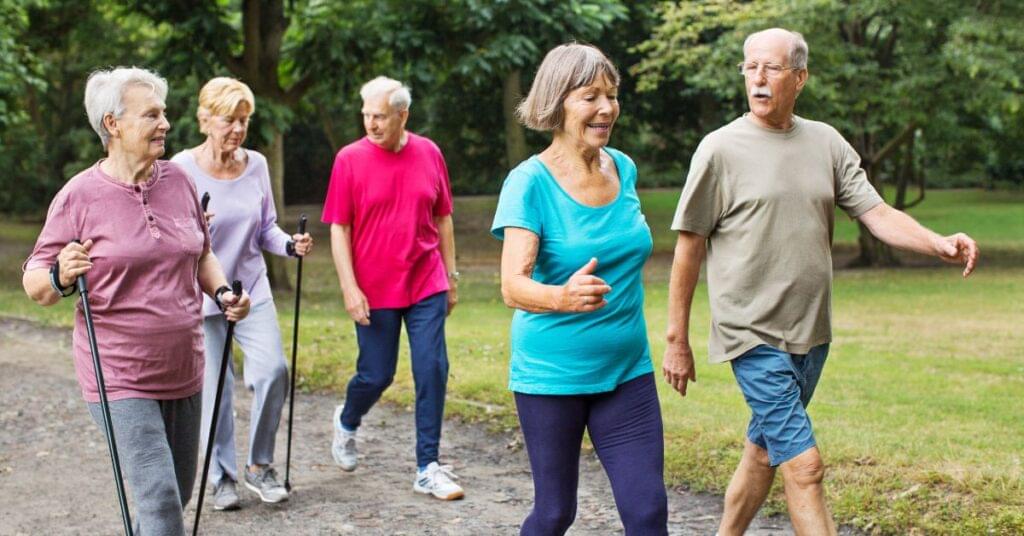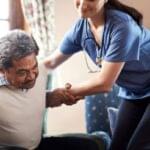At Servicure, Kolkata’s leading elder care service provider, we understand the importance of staying active for a healthy and fulfilling life at any age. Regular exercise offers numerous benefits for seniors, including improved strength, flexibility, balance, and overall well-being. However, not everyone has access to a gym or enjoys strenuous workouts. Here, we explore five easy home exercises that can be done comfortably within the familiar surroundings of your own home.
Chair Exercises: Building Strength While Seated
Chair exercises are a fantastic way to incorporate strength training into your daily routine without needing any special equipment. Here are a few examples:
- Seated Leg Lifts: Sit tall in a chair with your feet flat on the floor. Slowly raise one leg straight out in front of you, hold for a few seconds, and then lower it back down. Repeat with the other leg. Aim for 10-12 repetitions per leg. This exercise strengthens the quadriceps, the muscles on the front of your thighs.
- Arm Raises: Sit with your arms at your sides. Raise one arm straight out to the side until it’s parallel to the floor. Hold for a few seconds and then lower it back down. Repeat with the other arm. Consider incorporating light weights (water bottles can work!) for an added challenge. Aim for 10-12 repetitions per arm. Arm raises strengthen the shoulders and upper arms.
- Seated Twists: Sit with your feet flat on the floor and your hands resting on your knees. Gently twist your torso to one side, looking over your shoulder. Hold for a few seconds and then return to center. Repeat on the other side. Aim for 10-12 repetitions per side. Seated twists engage the core muscles, which help with posture and stability.
Marching in Place: Keeping the Heart Rate Up
Marching in place is a simple yet effective cardio exercise that gets your heart rate up and improves circulation. Stand tall with your arms at your sides. Lift your knees one at a time as if you’re marching, but without actually going anywhere. Maintain a good pace for 30 seconds to 1 minute. You can increase the intensity by marching with high knees or adding arm circles. Marching in place is a low-impact activity that is easy on the joints.
Heel-Toe Walking: Improving Balance and Coordination
Heel-toe walking is a great exercise for improving balance and coordination. Here’s how to do it: Stand tall with your feet hip-width apart. Take a step forward, placing your heel down first, and then slowly bring your toes down to meet your heel. Repeat with the other foot, taking small, controlled steps. Continue walking heel-toe for 30 seconds to 1 minute. This exercise challenges your sense of balance and helps to prevent falls, a major concern for seniors.
Wall Stretches: Enhancing Flexibility
Gentle stretching is crucial for maintaining flexibility and reducing stiffness in the joints. Wall stretches utilize a wall for support, making them safe and easy to perform. Here are two examples:
- Hamstring Stretch: Stand facing a wall with your feet hip-width apart and about an arm’s length away from the wall. Lean forward from your hips, keeping your back straight, and reach your hands down towards the wall. Hold for 15-30 seconds, feeling the stretch in the backs of your thighs.
- Shoulder Stretch: Stand facing a wall with your arm raised overhead. Lean your body slightly towards the wall, feeling the stretch in the front of your shoulder. Hold for 15-30 seconds and then repeat with the other arm. Wall stretches help to maintain flexibility in the hamstrings and shoulders, which can improve posture and range of motion.
Balance Exercises: Staying Steady on Your Feet
Balance exercises are essential for maintaining your independence and preventing falls. Here are two simple exercises to try:
- Single Leg Stand: Stand tall with your feet hip-width apart. Slowly lift one leg off the ground and hold your balance for as long as you can comfortably. Aim for 10-30 seconds per leg. If you need assistance, you can lightly touch a wall for support. Single leg stands challenge your balance system and improve proprioception, your body’s awareness of its position in space.
- Heel-Toe Walking on a Line: Find a straight line on the floor (use masking tape if needed). Walk heel-toe along the line, taking small, controlled steps. Focus on maintaining your balance and keeping your feet on the line. Aim to walk the entire length of the line three times. This exercise improves balance and coordination while challenging your foot placement.
Tips for Safe Exercise
- Start Slow and Gradually Increase: This is especially important for beginners or those returning to exercise after a break. Begin with a low number of repetitions and short durations, and gradually increase the intensity and duration over time. This allows your body to adapt to the exercise stress and reduces the risk of injury.
- Listen to Your Body: Pay attention to how you’re feeling during exercise. If you experience any pain, stop the activity and rest. Don’t push yourself through pain, as this could lead to injury. Take breaks when needed, and don’t hesitate to modify exercises if they feel uncomfortable.
- Warm Up Before and Cool Down After: A proper warm-up prepares your body for exercise by increasing blood flow and muscle temperature. This helps to improve flexibility and reduce the risk of injury. Aim for 5-10 minutes of light cardio and dynamic stretches before your workout. Similarly, a cool-down helps your body return to its resting state and can prevent muscle soreness. Include static stretches and gentle movements for your cool-down.
- Stay Hydrated: Drink plenty of water before, during, and after exercise. Dehydration can lead to fatigue, muscle cramps, and dizziness. Aim to drink water throughout the day, even when you’re not exercising. As a rule of thumb, consume around 16 ounces of water about an hour before exercise, and then sip water every 15-20 minutes during your workout.
- Consult Your Doctor: If you have any underlying health conditions, before starting a new exercise routine, consult your doctor. They can advise you on safe exercises and any modifications you might need to make to your workout plan. This is especially important if you haven’t been active for a while or have any limitations due to health issues.
Resources
General Resources on Elder Care Exercise:
- National Institute on Aging (https://www.nia.nih.gov/health/exercise-and-physical-activity) This website by the National Institutes of Health provides information on the importance of exercise for seniors, along with tips for getting started and staying safe.
- Mayo Clinic (https://www.seniorlifestyle.com/resources/blog/7-best-exercises-for-seniors-and-a-few-to-avoid/) This Mayo Clinic webpage offers a detailed guide on exercises for older adults, including recommendations for strength training, flexibility, and balance.
- Centers for Disease Control and Prevention (https://www.cdc.gov/physicalactivity/basics/adding-pa/activities-olderadults.htm) The CDC website has a section dedicated to physical activity for older adults, including information on the benefits of exercise and recommendations for different fitness levels.
Resources on Specific Exercises:
- Exercises for Improving Balance in Older Adults (https://aptageriatrics.org/events/courses/balance-fall-prevention-course/) This webpage from the American Physical Therapy Association provides instructions and benefits for various balance exercises suitable for older adults.
- Stretching Exercises for Seniors (https://m.youtube.com/watch?v=eHXbj2Uq8mM) This Verywell Fit article details different stretching exercises targeting various muscle groups, with clear instructions and modifications for seniors.
- Seated Exercises for Seniors (https://www.youtube.com/watch?v=RhR-E85GJSw) Here’s another helpful resource from Verywell Fit, outlining effective seated exercises that can be done at home with minimal equipment.




